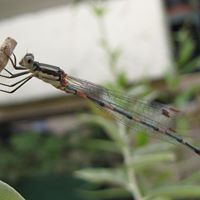What is the green-colored organism growing up the tree trunks on the bark?
The green-colored organism shown in the picture growing up the tree trunks on the bark is called lichen. It is a composite organism that emerges from algae or possibly cyanobacteria living among the filaments of the fungi in a mutually beneficial symbiotic relationship.
When the term symbiotic is used, it refers to two different biological organisms that benefit each other due to their interaction. In this instance, the fungi benefits from the carbohydrates produced by the algae or cyanobacteria via photosynthesis (process used by organisms to convert light energy into chemical energy). The algae or cyanobacteria benefit by being protected from the environment by the filaments of the fungi, which also gather moisture and nutrients from the environment.
Evidence that lichens are examples of successful symbiosis is the fact that lichens can be found in almost every habitat and geographic area on the planet.
Lichens occur from sea level to high alpine elevations, in many environmental conditions and can grow on almost any surface including bark, leaves, mosses and and on other lichens. It is estimated that 6% of Earth’s land surface is covered with lichens.
In 1867, the Swiss botanist Simon Schwendener (1829-1919) proposed his theory of the symbiotic relationship of lichens. His theory was challenged at first but further experimental proof was obtained in 1939 by Eugen Thomas’s published results in the journal ‘Bryologist’. Schwendener’s theory was validated.
More Info:
en.m.wikipedia.org










